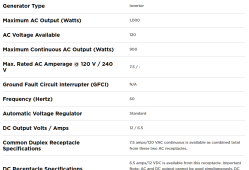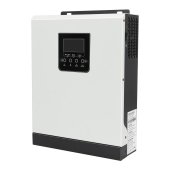AlexanderKristiansen
New Member
- Joined
- Mar 18, 2020
- Messages
- 96
I have a 1 Kw Honda gas generator, but when I connect it to my charger, the input is around 200 watts. I have an all-in-one inverter/charger/MPPT. I have tried different settings on my inverter, usually the bulk to 28,0 - 28,4 and float between 27,0 - 28,0. I have tried all sorts of combinations. The inverter doesn't have an absorption setting. I use a lot of gas for very low input and slow charging.
What can I do to fix this?
What can I do to fix this?




